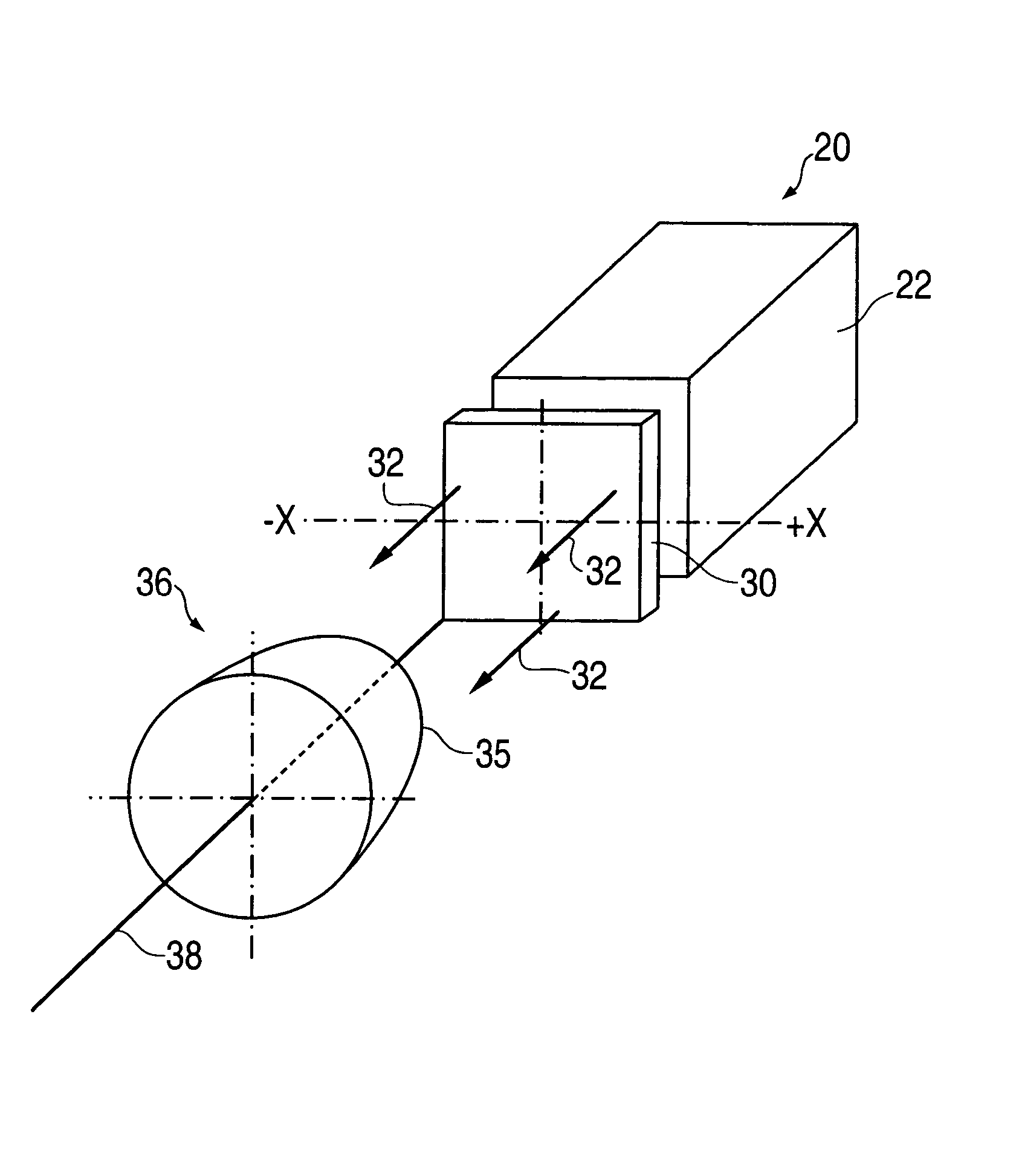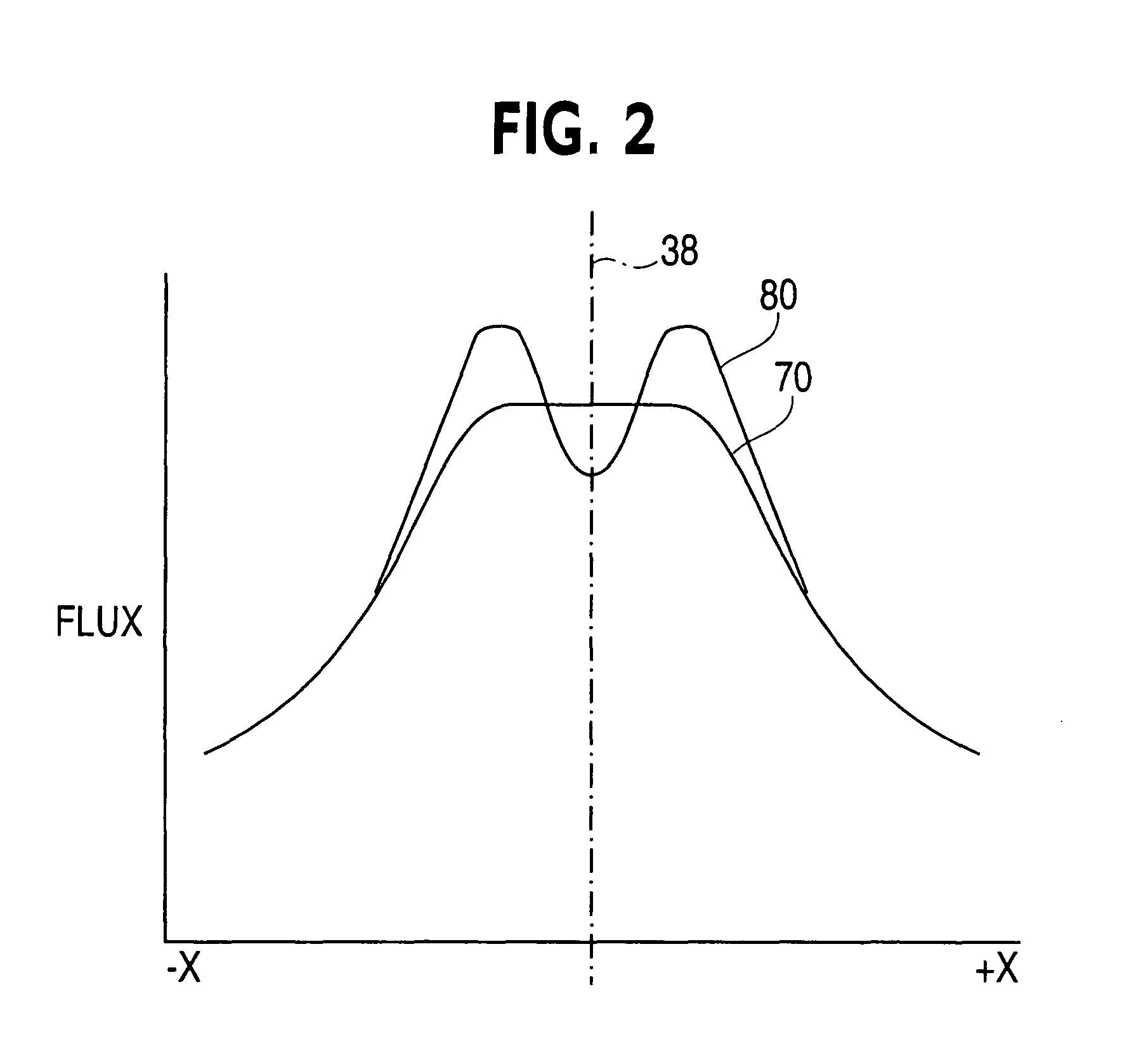Method and apparatus for improved ultraviolet (UV) treatment of large three-dimensional (3D) objects
a three-dimensional object and ultraviolet treatment technology, applied in the direction of optical radiation measurement, fluorescence/phosphorescence, instruments, etc., can solve the problems of limiting existing radiation sources, irregular finished products, and inability to cure clear coatings instantaneously by thermal treatment, so as to improve improve the control of irradiance and/or absorbed energy or light flux. , the effect of increasing the uniformity of radian
- Summary
- Abstract
- Description
- Claims
- Application Information
AI Technical Summary
Benefits of technology
Problems solved by technology
Method used
Image
Examples
Embodiment Construction
In the following description of the present invention, reference is made to the accompanying drawings that form a part, hereof, and in which are shown by way of illustration the various embodiments in which the invention may be practiced. It is understood that other embodiments may be utilized, and that structural and functional modifications may be made without departing from the scope of the present invention.
FIG. 1 depicts a first embodiment of an irradiation apparatus 20 in accordance with the present invention. The apparatus 20 includes a UV radiation source 22, which is depicted as a rectangular enclosure with a square aperture. The radiation source 22 is a light source such as a source of UV in the preferred embodiments of the invention, and for example may be a plasma discharge lamp (microwave electrodeless discharge lamp, an arc discharge lamp, a fluorescent discharge lamp) constructed or filtered to radiate predominantly in the desired wavelength ranges, such as, for UV,...
PUM
 Login to View More
Login to View More Abstract
Description
Claims
Application Information
 Login to View More
Login to View More - R&D
- Intellectual Property
- Life Sciences
- Materials
- Tech Scout
- Unparalleled Data Quality
- Higher Quality Content
- 60% Fewer Hallucinations
Browse by: Latest US Patents, China's latest patents, Technical Efficacy Thesaurus, Application Domain, Technology Topic, Popular Technical Reports.
© 2025 PatSnap. All rights reserved.Legal|Privacy policy|Modern Slavery Act Transparency Statement|Sitemap|About US| Contact US: help@patsnap.com



